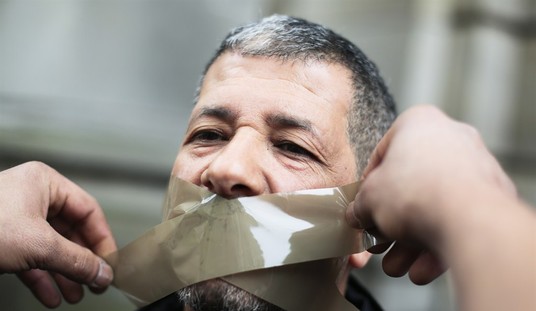A Gun Ownership Primer: The Philosophy Of Gun Ownership
A Gun Ownership Primer, Part 2: Does Evil Exist?
A Gun Ownership Primer: Is Killing Morally Justified? Part 1
A Gun Ownership Primer: Is Killing Morally Justified?
A Gun Ownership Primer: Political Realities, Part 1
A Gun Ownership Primer: Political Realities, Part 2
A Gun Ownership Primer: Life-Changing Realities, Part 1
Part one of these portion of the Gun Ownership Primer series dealt with things anyone carrying a concealed handgun must consider and address. This second part primarily concerns the legal issues involved.

LEGAL ISSUES:
There are two primary bodies of law with which anyone carrying a concealed weapon must be intimately familiar: the specific laws of their state that regulate concealed carry and the laws regarding the use of deadly force–in general–and those specific to their state. Of particular concern are the places where concealed carry is prohibited as most people have their permits suspended for accidentally carrying their handguns into such places. These restricted zones vary from state to state, so it’s always wise to carefully research this issue and avoid violating those laws. Keep in mind, however, that Col. Cooper said that it’s much better to be judged by twelve than carried by six. In other words, it’s better to be alive and in violation of a given law than dead and faultlessly law abiding. I do not advocate violating the law, merely being aware of all of the issues relating to these topics.
State Laws: These regulate who is allowed to carry, the related fees, forms and tests (usually written and shooting), terms of license validity and the means of renewal, specify manner of carry (open, concealed or both) and specific zones and places wherein firearms may not be carried by licensees. They also commonly list states with whom reciprocity is shared. In other words, states that have entered into a compact of mutual respect for the concealed carry licenses of their respective citizens.
Most states–at last count, 39–are “shall issue” states. In other words, if you meet the criteria for concealed carry under the law, no public official may deny you a license. Illinois was the only state where concealed carry was absolutely prohibited, but recent court orders have drug the legislature and Chicago political machine kicking and screaming into new and at least tentative compliance with the Second Amendment, though that battle goes one. However, in others–such as California–a “may issue” system is in place where local sheriffs or state officials have absolute authority to decide who will be allowed a license. In such states, licenses are normally granted only for the wealthy, well connected, politicians, or similar worthies. The National Rifle Association website maintains an up to date database of state laws under its Institute For Legislative Action tab .
NOTE: in February of 2014, a three-judge panel of the liberal Ninth U.S. Circuit Court of Appeals struck down the policy of San Diego County Sheriff William Gore to issue concealed carry licenses only to people who could prove a “special need” to his satisfaction. This is hardly the last step in the legal process, and if the past is any indicator, California politicians will fight tooth and nail to the last drop of blood to continue to deny their citizens their basic rights.
Another vital state issue is preemption. The legislatures of many states have passed preemption laws that prevent cities within those states from passing and enforcing different—usually more restrictive—firearm laws than those in the state statutes. In the states that do not have preemption, one may be committing multiple crimes simply by driving across city limit boundaries. What is completely lawful on one side of an unmarked border is a crime on the opposite side. New York City and New York State are obvious examples of this issue. Again, it is vital to be fully aware of the law wherever you live and wherever you travel. DO NOT, by any means, expect the police or prosecutors to be just or rational where firearms are concerned. Most will be, but in some places, virtually all will not.
Reciprocity is likewise important. Many states have entered into agreements with other states that allow concealed carry to mutually honor their licenses. Circa March, 2013, a bill for national concealed carry reciprocity (H.R. 822) has passed the house, however it stalled in the Democrat-controlled Senate. Considering the current push for gun control in that body, passage is unlikely, certainly for the remained of Barack Obama’s second term. He promised in his most recent State of the Union address to use Congress-skirting executive orders and administrative regulations to impose gun control measures. One may be reasonable certain that he will live up to this promise if no other.

The Shaneen Allen case is instructive. Allen, a single, working mother of two young boys and a resident of Pennsylvania obtained a concealed carry license after being mugged. Stopped for a minor traffic violation in New Jersey, she was arrested for possession of her firearm and was facing a felony conviction and years in jail until massive public outcry forced the anti-prosecutor involved to authorize a pre-trial diversion program designed for cases like hers. Yet again, you are responsible for being aware of any and all laws wherever you live or travel.
Municipal laws may also have some bearing, but only in those states that lack a state preemption statute. Ultimately, the point is to become very familiar with any state or local laws that might apply, not only where you live, but where you plan to travel. Even those states with reciprocity agreements with your state are sure to have some significant differences in law, and you are required to follow the law wherever you are, even if it differs from the law in your home state.
[article continues on next page]
The Doctrine of Deadly Force:
This is another area where you must carefully follow state law. The laws of some states are more lenient than the general principles of the use of deadly force, while some are more restrictive. The question is: when is the use of deadly force justified? Answer: when necessary to halt the imminent threat of serious bodily harm or death to you or another.
Andrew Branca, whose definitive book The Law of Self Defense, is must reading for anyone concerned about these issues–adds several other, related criteria/concerns:
Innocence: the defender must not be the initial or unlawful aggressor. People engaging in mutual combat can’t claim innocence. They’re not engaging in self-defense.
Imminence: This is another way of expressing the concept of jeopardy. One can’t use deadly force again a possible attack, or against an attack that might happen at some time in the future. The danger must be real, clearly about to occur–with fractions of a second or seconds, or already occurring.
Proportionality: the threat can’t be of humiliation or minor injury. If the only thing in jeopardy is hurt feelings, even a punch in the nose might not be proportional. A reasonable person must believe they’re facing a threat of serious–Branca uses the word “grave”–bodily harm.
Reasonableness: A reasonable person of the same knowledge, abilities and in the same circumstances would be compelled to use deadly force.
State laws vary, using different terms, and it is everyone’s responsibility to be aware of the law in their state of residence. Some states particularly allow the use of force–even deadly force–under circumstances that others do not.
What this basically means is that in any situation in which a reasonable person would believe that they–or another–was faced with the imminent–as opposed to possible or future–threat of serious bodily injury or death, deadly force is a reasonable response. Of course, running away might also be a wise and reasonable response, but only if it is reasonably possible. In states that have enacted the Castle Doctrine or a “stand your ground” law–more about that later–it is not required, but may still be a good idea.
It’s important to understand what “serious bodily injury” means. While the legal definition will tend to vary somewhat from state to state, it essentially refers to injury that, while not deadly, is crippling, seriously disfiguring, that will have a continuing, negative impact on the quality and longevity of your life from the moment it is inflicted. Getting shot in the leg or shoulder–as in the movies–is not something to be easily treated and shrugged off. Gunshot wounds are ugly, nasty and can be permanently debilitating. Equally, cuts inflicted by edged weapons like swords or knives can be as debilitating and in many ways, far more horrific and ugly. Many police officers that survive a gunshot wound may be physically healed, but never fully psychologically recover. Broken bones from a beating would also certainly qualify. The greatest problem is how do you know what injury the next blow delivered by hand or foot will cause? Will you be merely bruised? Will bones be shattered? Will you be blinded, brain damaged, crippled, even killed?
Take the case of Ken and Carol Dorushka. Ken was shot in the arm while shielding his wife with his body during the January 8, 2011 attack on Rep. Gabrielle Giffords in Tucson. He, like the others present at the time of the attack, was unarmed. The brutal thug that injured and killed so many would want his name to be mentioned here. Despite suffering no physical injuries, Carol arguably suffered most—and continues to suffer. The Wall Street Journal article at the link is worth your time.
The means for determining–on the spot–if deadly force is necessary and justified is to apply the “means, opportunity, and jeopardy” test. Keep in mind that this explanation assumes that you are the innocent party; you have not provoked or initiated the confrontation. It also assumes that a reasonable person of the same abilities in the same circumstances would be compelled to apply deadly force. There are a variety of similar terms/acronyms, but they all boil down to the same thing:
Means: Does your opponent have the means necessary to cause serious bodily injury or death? If you are a 100 pound, 5 foot nothing woman, any man of average size and strength would almost certainly have the means necessary employing only his bare hands–if he is close enough. Someone with a gun certainly would. Someone with a knife, almost certainly, and someone holding a variety of other instruments would also pose such a threat. Someone known to be highly skilled in a martial art, even if smaller than you, might also have the means.
Opportunity: Does your opponent have the opportunity to cause serious bodily injury or death? An attacker armed with a handgun certainly does, out to normal handgun ranges, perhaps as much as 50 yards away, although there is always such a thing as a lucky shot even at greater ranges. An attacker armed with a rifle has a much greater dangerous range. Someone armed with a knife is dangerous to a minimum of 21 feet, perhaps even more, as practical experience demonstrates that even an average person with a knife can close 21 feet before they can be shot and/or stopped by a handgun-wielding victim. Practicing for this possibility is commonly known as the Tueller Drill. By all means take the link and read the related article, which is an interview of Dennis Tueller himself.
If a knife-wielding opponent at a greater than 21-foot distance moves as though to throw the knife, a reasonable person must assume that they know what they are doing and can cause serious injury or death at a distance with that knife. Other tools such as hammers, bats, screwdrivers, etc. are also dangerous if the person wielding them is close enough and arguably, if they throw them from a reasonably close distance. Some people are more able to dodge than others.
Jeopardy: Is an opponent acting in such a way, here and now, as to indicate to a reasonable person that they, or another, are in imminent danger of serious bodily injury or death? An opponent you know to be carrying a handgun which remains holstered is not putting you in jeopardy, but when he, after uttering threats, perhaps even glaring at you menacingly, quickly reaches for his handgun, jeopardy attaches. Someone standing across the street with a knife yelling threats is not putting you in jeopardy, but when they begin to run toward you, jeopardy increases enormously with each foot gained.
Notice that I keep referring to what a “reasonable person,” might think or do. This is the general standard applied by the law in analyzing the use of deadly force. Shooting a slight 12 year-old girl who yells “I’ll kill you,” while making ready to throw a baseball at you from 50 feet away would almost certainly be found to be inherently unreasonable. Shooting an adult male who has threatened to kill you and is bringing a shotgun to his shoulder from the same distance would almost certainly be considered to be inherently reasonable. Fortunately, the courts, even the Supreme Court, understand that one cannot be expected to be absolutely cool and calm and able to engage in extended intellectual reflection and debate when faced with imminent deadly danger. That necessary understanding does not, however, relieve anyone of the necessity of acting reasonably and properly in deadly force situations.
Shooting to Kill: YOU MUST NEVER SAY, OR EVEN THINK, THAT YOU SHOOT TO KILL. You never shoot unless the requirements of the three part means, opportunity, and jeopardy test have been satisfied. More specifically, you shoot if all of the necessary elements under the self-defense and use of deadly force laws of your state are present. If so, you shoot only to STOP the attacker, to immediately stop them from doing what they were doing that put you or another in imminent danger of serious bodily injury or death. To that end, you shoot as quickly and effectively as possible to immediately end the threat.
This might seem to be an exercise in semantics, but it is very important. If being investigated, or on trial for shooting another human being, regardless of how innocent you are and how reasonable and correct your actions, every word you utter, every intention you purport to have had, will be vital to your freedom and future.
With that in mind, one shoots to stop an attacker, not because you wanted to kill them–or anyone–but because you had no choice, because if you didn’t stop them, you would have been killed. That they died as a result of being stopped is regrettable and a tragedy, but a tragedy they forced on you, an innocent person who had no intention of hurting them or anyone else. You are the innocent victim of a deadly attack, and you must say and do nothing to paint yourself as anything but an innocent, remorseful victim.
Once again, the best and most complete current resource on this issue is The Law of Self Defense by attorney Andrew Branca. His book is truly excellent. Full disclosure: Branca and I correspond upon occasion, but I yield no benefit from his book sales.
Next week’s installment of this series will focus on the mechanisms of stopping human beings that wish to do you serious bodily harm or cause your death.
Mike’s Home blog is Stately McDaniel Manor.









Join the conversation as a VIP Member